Rajma masala poori is an Indian puffed bread made of whole wheat flour and leftover rajma masala and fried in oil. It’s perfect to pair with Indian curries. Poori, which also goes by the name of puri, is a popular breakfast cereal all over India. It’s a great flat bread idea.
Those who like vegan & vegetarian recipes can join my Facebook group World Best Vegetarian & Vegan Recipes.
Those of you who have been reading our blog for some time already know that we make videos for each recipe on our YouTube channel.
These poori are one of the most versatile side dishes because they go with every meal, whether breakfast, lunch, or dinner.
To satiate our soul, there is nothing better than the soul-satiating rajma with its dense gravy and rice or roti. Even though rajma masala is absolutely fabulous, having it again the same day is not so appealing.
Rajma poori is a protein-packed snack made from kidney beans.
I feel heartbroken to see our beloved rajma go to waste. But, you don’t have to. Perhaps, you can use that same rajma to make other delicious dishes for your next meal. This recipe is a particularly good way to utilize leftover Punjabi rajma masala.
Rajma pooris can be served with salad or pickle and green chutney as an appetizer.
You may also like some other drinks recipes on my blog – Veggie Cheese Cake – Mix Vegetable Recipe, Falafel, Vegetable Cheese Crepes, Vegan Spanish Spinach Croquettes – Air Fried.
Also here is the Rajma masala recipe with step by step photo and video – Rajma Masala
Sharing is caring! LET’S BE FRIENDS ON PINTEREST! WE’RE ALWAYS PINNING TASTY RECIPES!
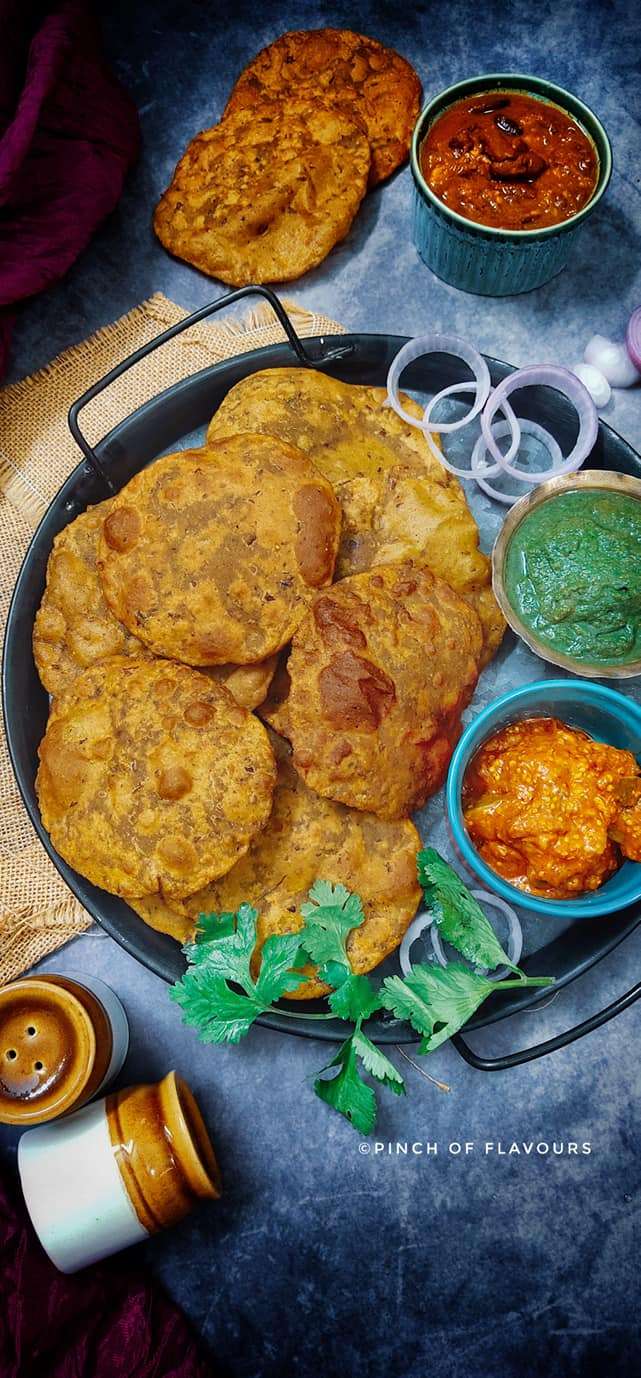
Check Out The Rajma Masala Poori Recipe Video :
What is Rajma Masala?
The Punjabi Cuisine’s Rajma masala is a delicious and healthy red kidney beans curry. This is a thick red kidney bean curry with many whole Indian spices made with tomato-based gravy, typically to be served with rice.
Rajma Masala is also known as Kidney Beans Curry, and it is extremely popular in North India.
Rajma and rice combined is a very pleasant combination throughout northern India, giving it the universal name of ‘Rajma Chawal’
Health Benefits of Kidney Beans:
- Low Cholesterol – Ingesting kidney beans due to their high content of complex carbs and dietary fiber reduces cholesterol levels.
- A source of protein – Kidney beans are packed with protein and can serve as a great meat substitute for vegetarians.
- Rajma has a low glycemic index, which helps keep blood sugar levels balanced.
- Kidney beans are rich in dietary fiber, which will keep one full for a longer period of time. Additionally, the low-fat content makes this a wholesome low-calorie meal.
- The manganese and calcium in kidney beans strengthen the bones and help prevent osteoporosis.
What exactly is Rajma?
Rajma is a type of bean that is eaten widely in Northern India and Nepal to make curries. The most popular varieties are Kashmiri, Citra, and Red Rajma.
However, it gets slightly mushy when cooked in a curry giving the dish the perfect texture.
What exactly is Poori?
Poori is an Indian bread that is traditionally deep-fried and puffed that is typically eaten with breakfast, lunch, and dinner.
Poori is one of my favorite north Indian dishes. I make it at least once a week, and it’s pretty good.
To prepare this bread, you need only two ingredients: whole wheat flour and water. It takes little effort, but it elevates even a simple meal into a gourmet delight.
About Rajma Masala Poori Recipe
This Rajma Masala Poori is really easy to make but taking the time to get it just right requires patience and practice. Preparation of this whole wheat bread only takes very few ingredients but elevates even a simple meal to a gourmet’s delight.
I use a little finely ground sooji with whole wheat flour as it makes the Pooris nice and crispy. And adding the leftover Rajma masala by mashing it and then adding it along with spicy and tangy green chutney makes it even more delicious and a healthy recipe.
Of course, it is deep-fried but here we are using whole wheat flour as nutritionists in Western nations keep telling us how bad refined flour and white bread are. But Indians hardly use refined flour or white bread on a daily basis.
It’s much healthier to use whole wheat or besan (from channa) than maida.
This Rajma Masala Poori is,
- Delicious
- Comforting
- Easy to make
- High in Protein
- Apt for your weekend breakfast once a week
Ingredients
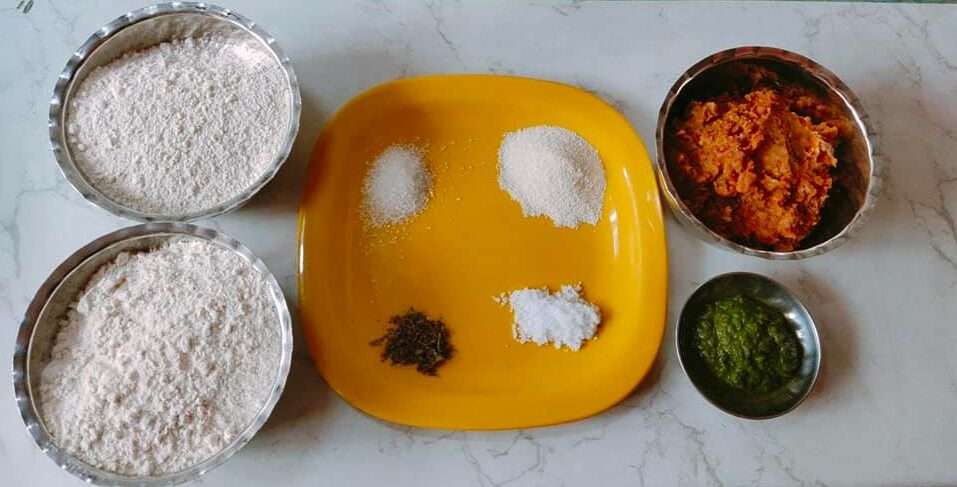
Whole Wheat Flour – We use Whole Wheat Flour in this fried bread.
Moreover, some people mix Maida/All-Purpose Flour with wheat flour to make the dough, but I prefer whole wheat flour when making pooris. A little salt is also added.
Sooji – This also gives these a nice crisp texture from the semolina. I used fine semolina.
Oil – Poori is mostly made using Rice Bran Oil or Vegetable Oil, but Ghee can also be used to elevate the taste of these little puffs.
Salt and sugar – If you would like the taste to be enhanced, add in a little salt and sugar as well. Sugar is optional.
Rajma masala – We use leftover rajma masala and mash it nicely lump-free green chutney as much as possible.
Green chutney – Grind all the ingredients like 1 cup – coriander leaves finely chopped, 2 tbsp – mint leaves chopped, 2 – green chilly, 2 tbsp – lemon juice, 1 inch – Ginger, 4 – garlic cloves, 1 tsp – sugar, 1 tsp – Chaat masala, and Water as needed. Tastes very delicious when added to this poori dough.
How to make Rajma Masala Poori step by step with photo:
- Mix flour, salt, sugar, sooji, and Kasuri methi in a bowl or plate. Add 1 tbsp of oil and mix everything well.
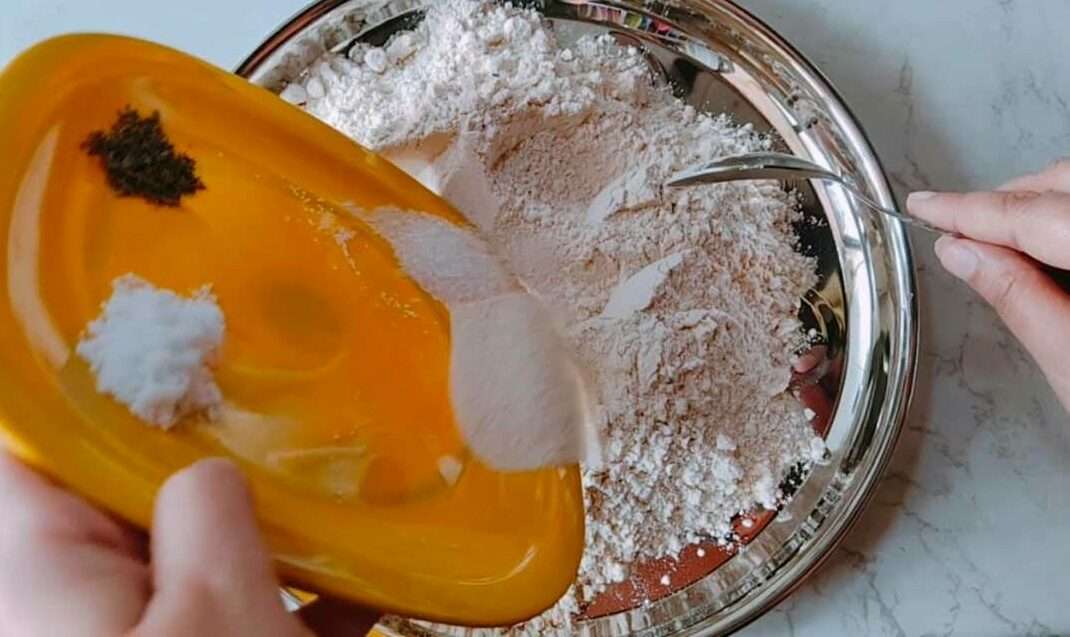
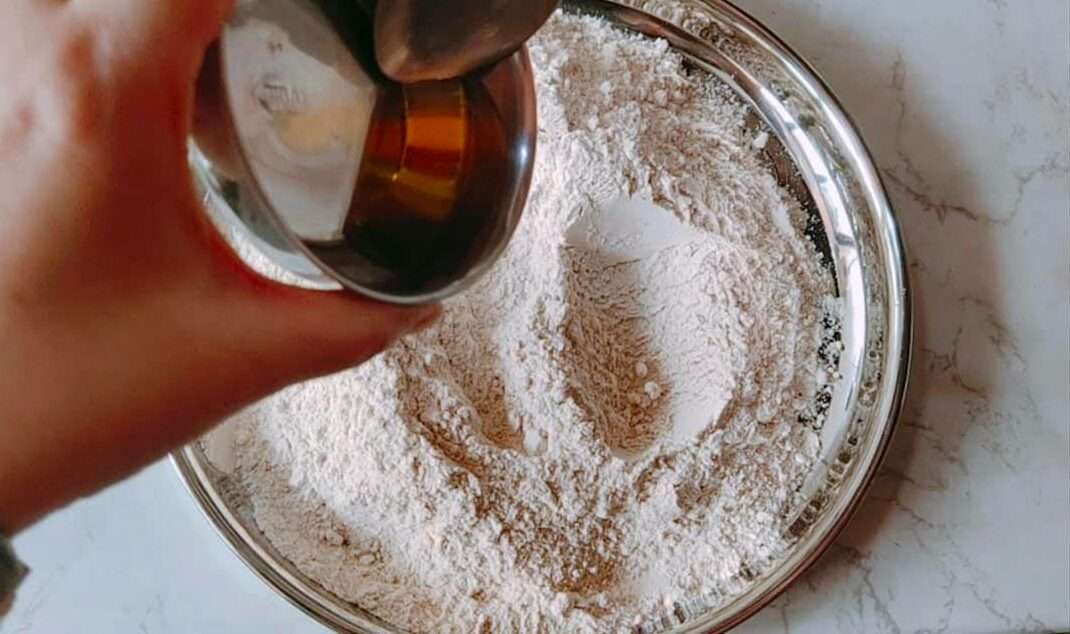
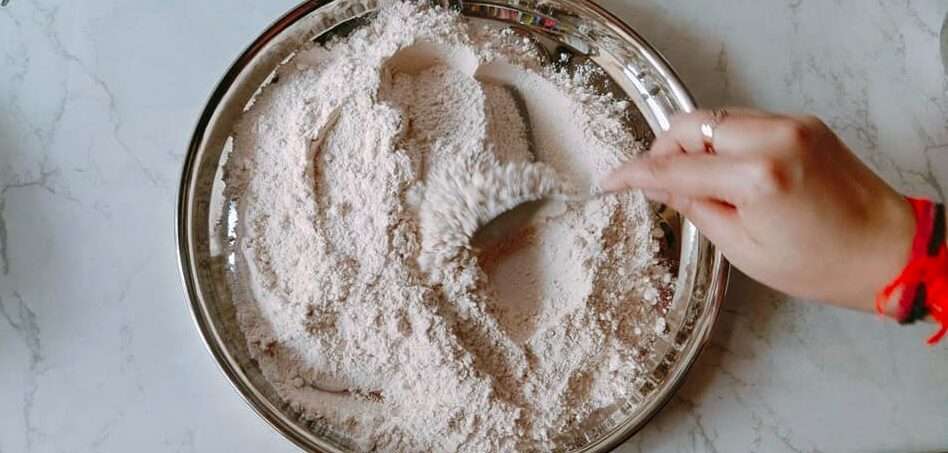
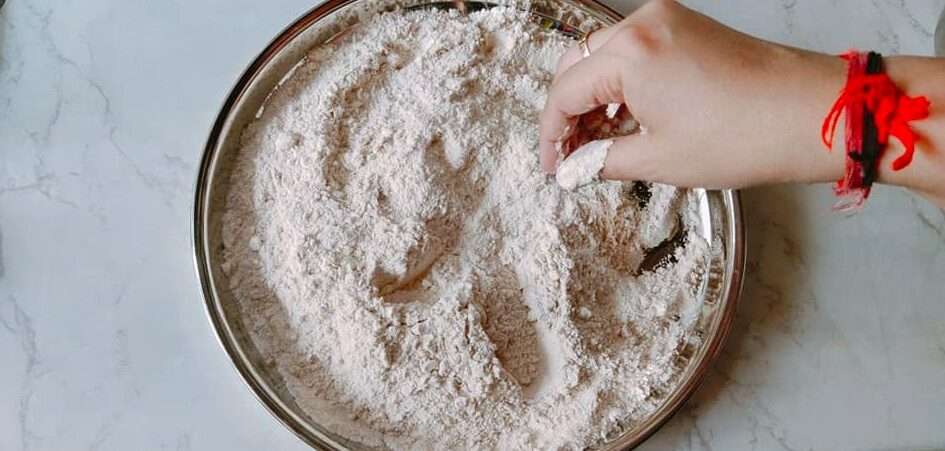
- Add 2 tbsp of green chutney and 1 cup mashed rajma masala and then mix everything nicely.
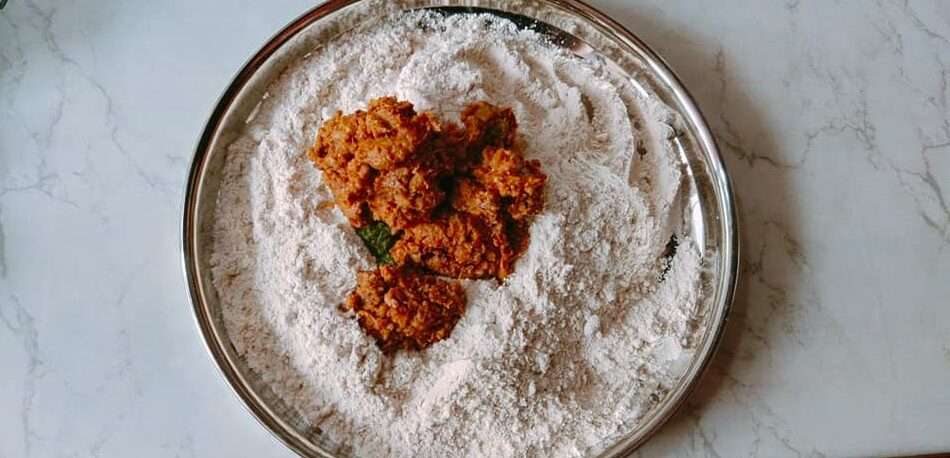
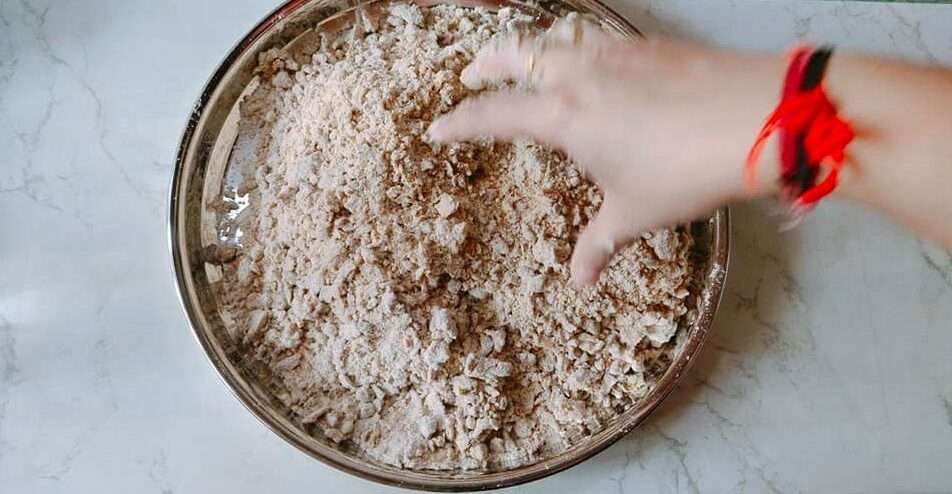
- Kneed it into a semi-firm dough. Apply a little oil all over the dough and then cover it and let it rest for 20 minutes.
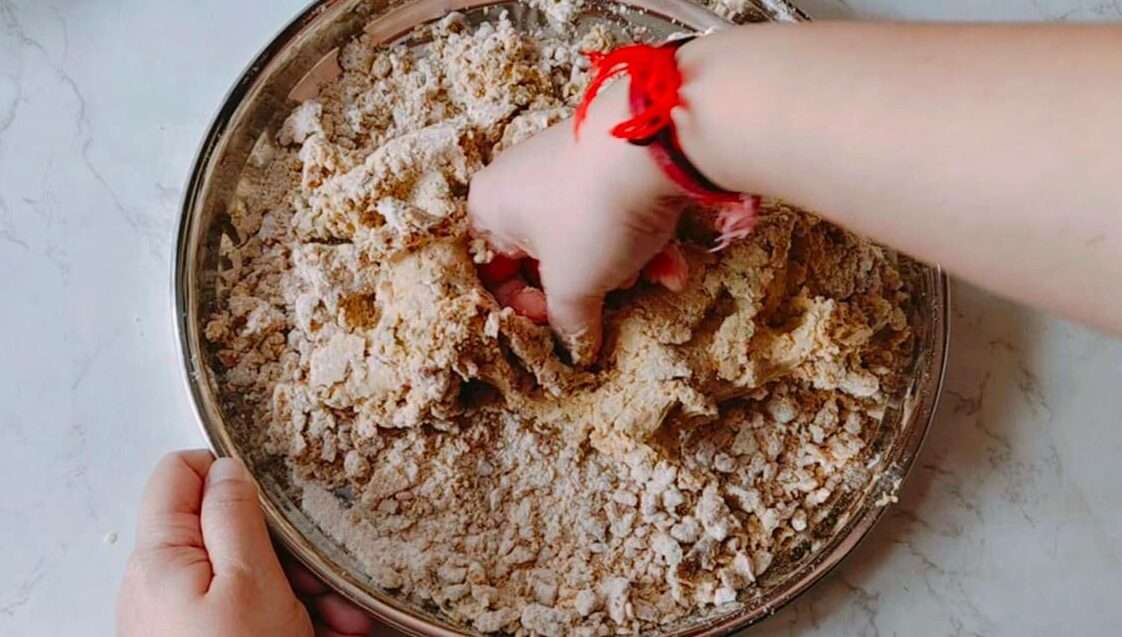

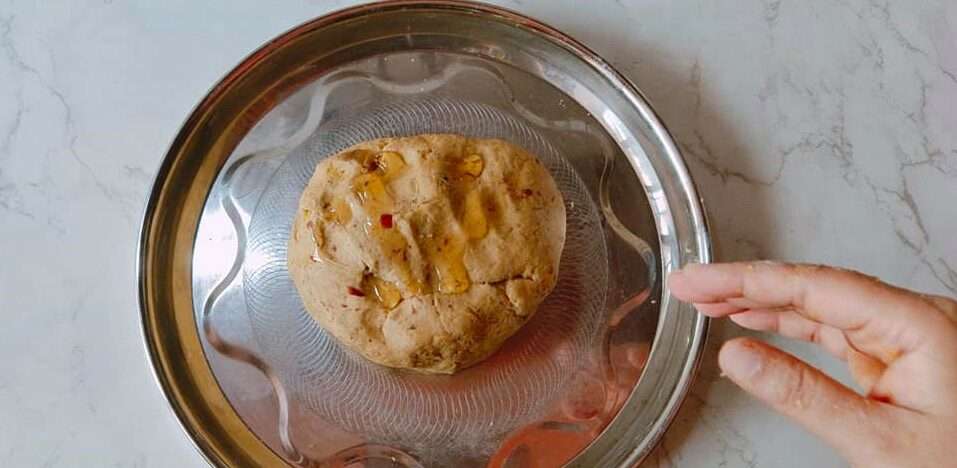
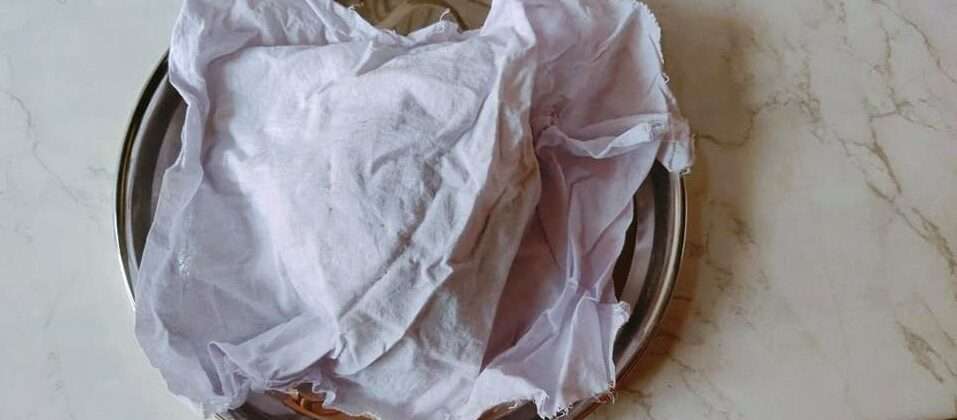
- After 20 minutes, knead the dough again for 1 minute and then divide the dough into small balls.
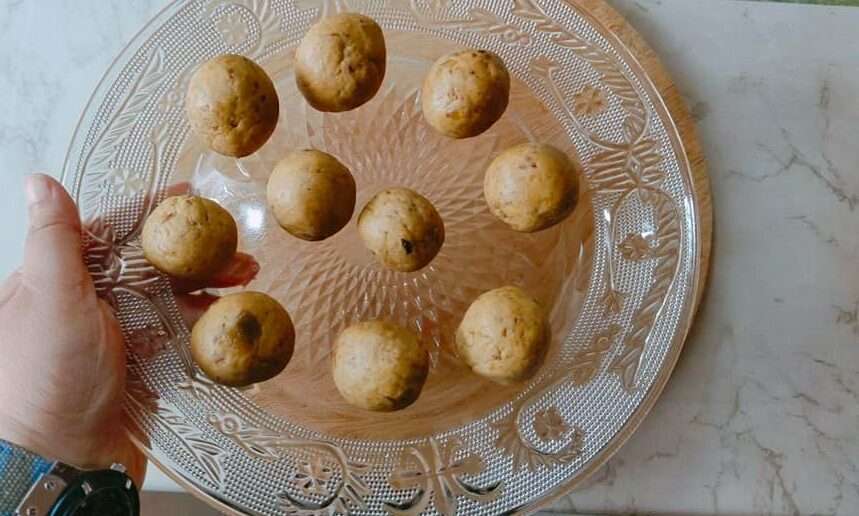
- Take one ball, apply a little oil, press a little, and roll it into a 3-inch uniform thin disc.
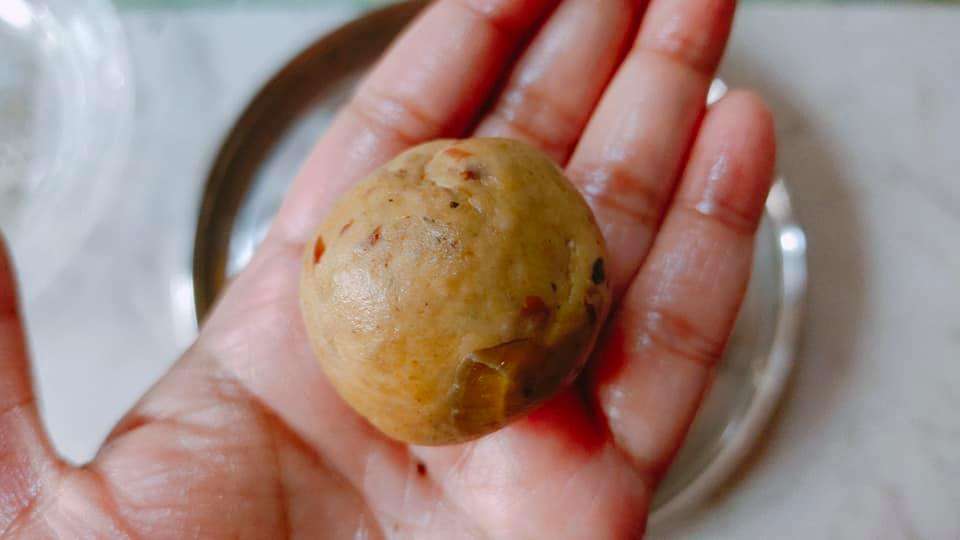
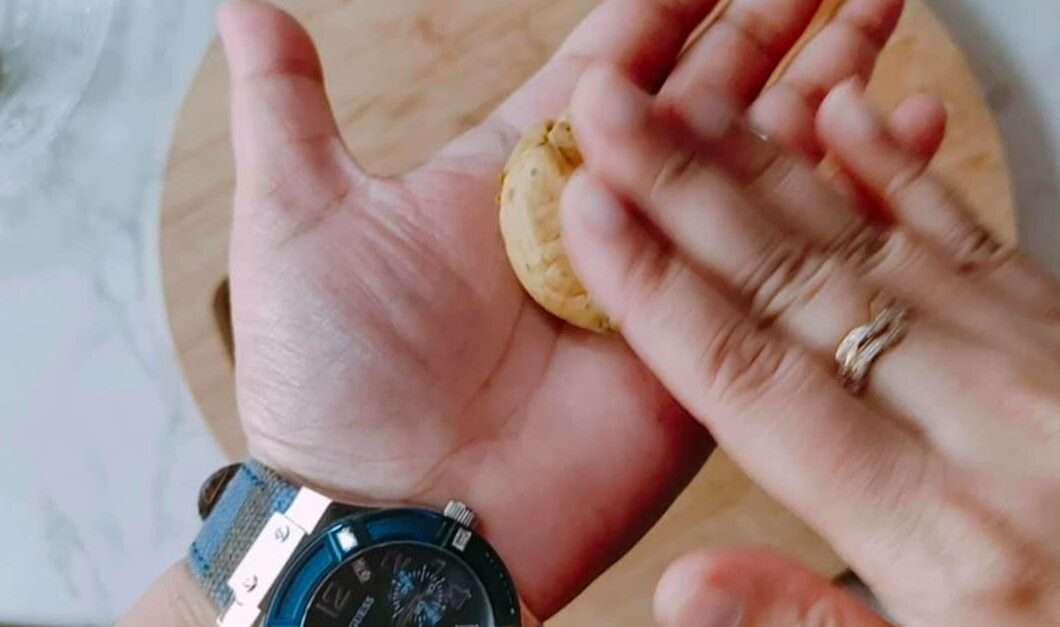
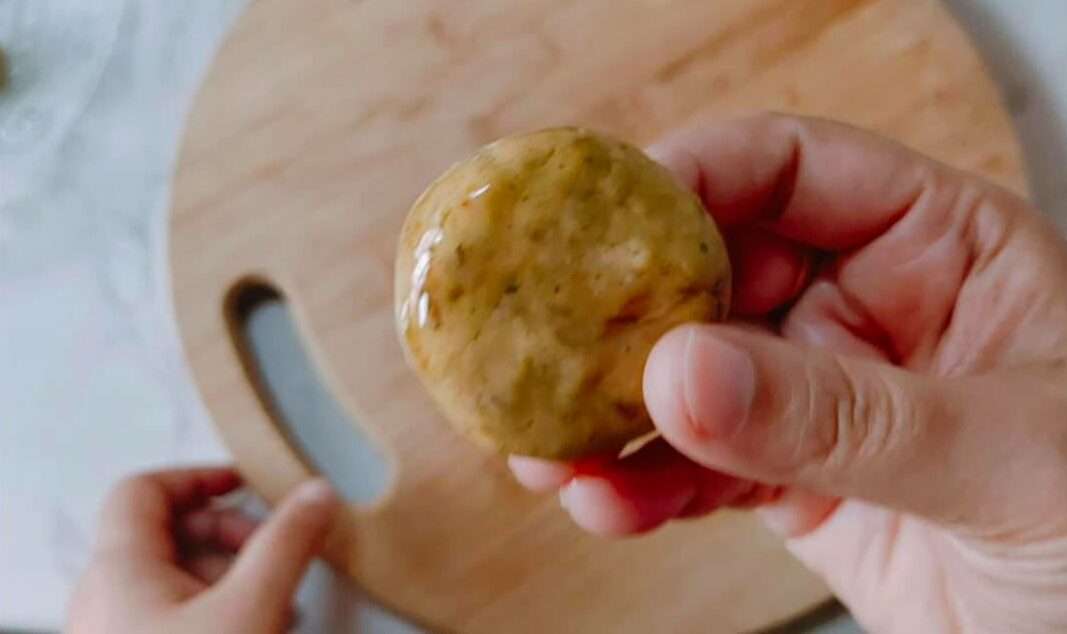
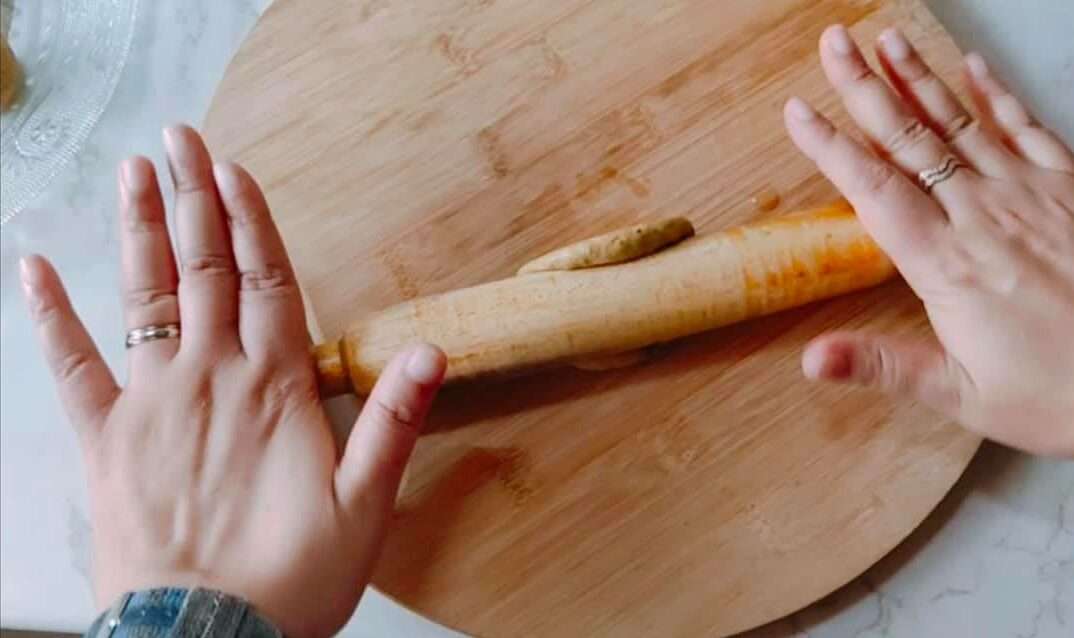
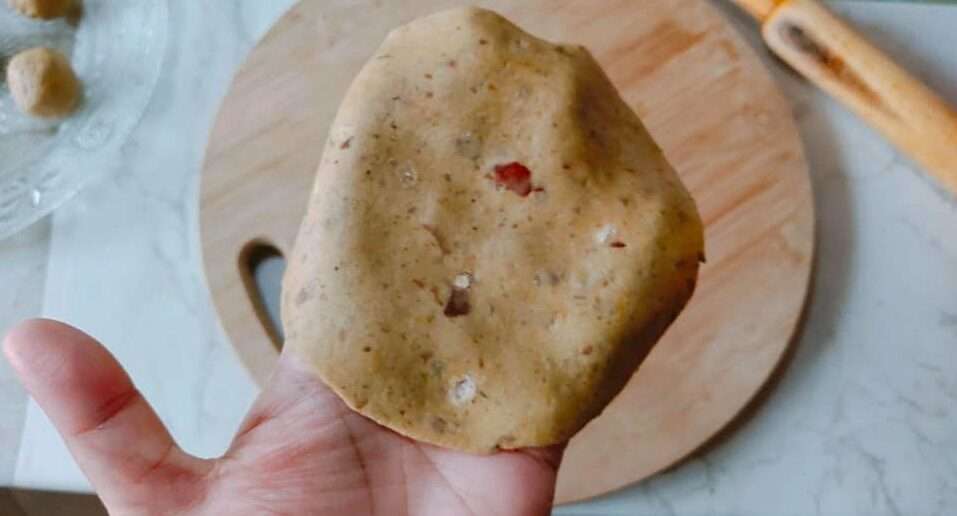
- Oil should be heated up in the pan. Slide the poori gently into the oil and cook it on medium-high heat.
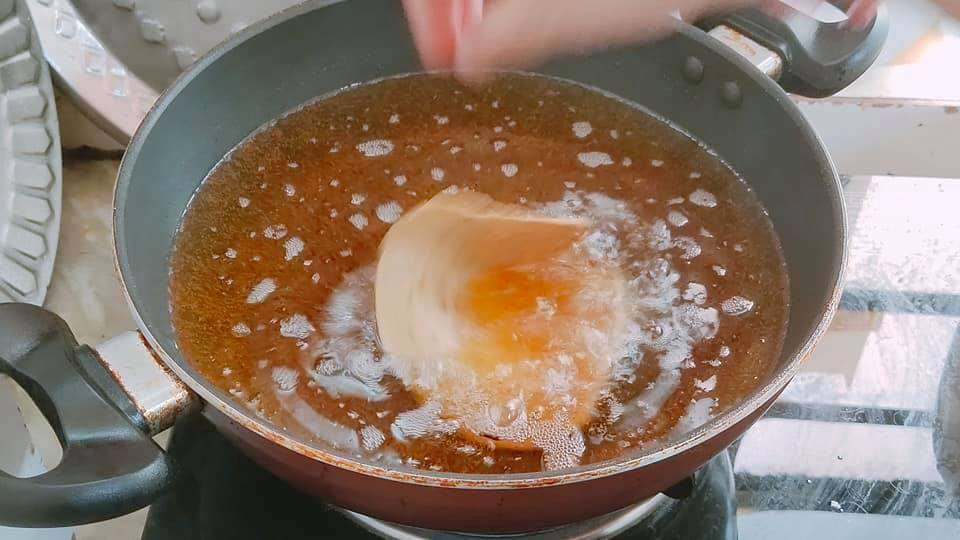
- Fry till both sides are golden brown and puffed.
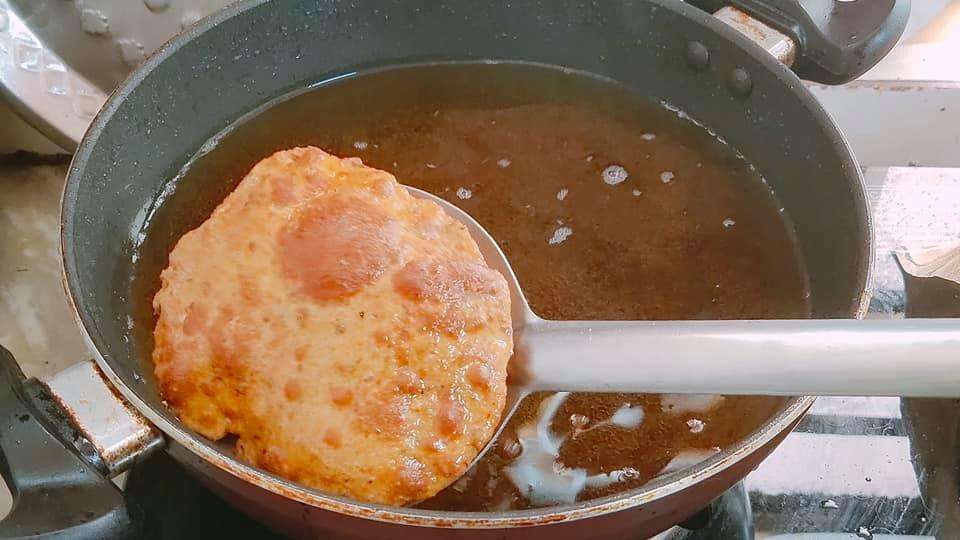
- Take out the pooris on a kitchen tissue on a plate to drain out excess oil.
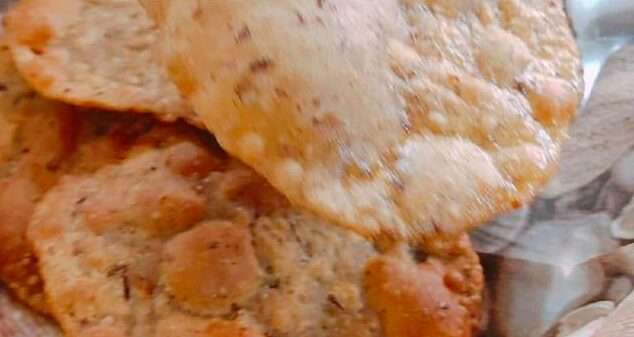
- Serve hot with green chutney or achar or pickle.

Important Suggestion To Keep In Mind
- Mix rajma masala into a bowl and mash it well. Add flour, salt, sugar, Kasuri methi, sooji, and a teaspoon of oil, and whisk well.
- With little by little, add water to the dough and start kneading until it becomes stiff but smooth.
- Divide the dough into small balls. Roll each ball into a thin disc that is three inches in diameter.
- The poori is fried by gently slipping it into the hot oil and frying on low flame from both sides until well puffed.
- Take out the balls and place them on an absorbent paper. Repeat the process for all the balls.
- Poori perfection lies in the dough. Make sure you knead it hard. If it is soft, the Poori won’t rise.
- Rolling them evenly prevents them from puffing and will also cause them to soak oil.
- To test whether the oil is hot enough, put a bit of dough into the oil and check if it sizzles.
- Puff the Poori up on medium-high heat. That way it will puff up nicely.
- Press the Poori gently with the back of a spoon once you have it in the hot oil so it will emerge properly in the oil.
Storage Suggestions
Pooris are great to eat steaming hot, out of the oil, but since they’re deep-fried, they keep up for a long time, becoming soft and mushy, but they remain fresh.
Pooris can be covered with aluminum foil and kept at room temperature for about a day.
In addition, when stored in an airtight container for up to 3 days, the poori dough will remain good in the fridge. Allow it to rest on the counter for 15 to 20 minutes before using it to make pooris.
Instead of freezing Poori, you can freeze the dough. Taking out the frozen dough, allowing it to come to room temperature, and then rolling the Poori.
Serving Suggestions
Rajma poori masala can be served with a simple Potato curry. It’s a classic combination that will always work. Or you can simply serve with achar or pickle or green chutney.
It complements almost all Indian Sabzi, Dals, and Curries.
Print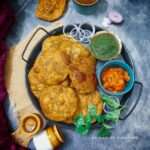
Rajma masala poori
- Total Time: 35 minutes
- Diet: Vegetarian
Description
You only need the one Rajma masala poori recipe to experience delicious pooris every time! The poori turns out slightly crisp, soft, and fluffy each time, plus they don’t oil up at all.
Ingredients
For Rajma Masala Poori :
- 1 cup – Rajma masala (I have used leftover Punjabi rajma masala)
- 2 cups – Whole wheat flour
- 1 tbsp – Semolina sooji
- 1 tsp – Kasuri methi, crushed
- Salt to taste
- Oil for frying
For Green Chutney:
- 1 cup – Coriander Leaves finely chopped
- 2 tbsp – Mint leaves chopped
- 2 – Green chilly
- 2 tbsp – lemon juice
- 1 inch – Ginger
- 4 – Garlic cloves
- 1 tsp sugar
- 1 tsp – Chaat masala
- Water as needed
Instructions
- Mix flour, salt, sugar, sooji, and Kasuri methi in a bowl or plate. Add 1 tbsp of oil and mix everything well.
- Add 2 tbsp of green chutney and 1 cup mashed rajma masala and then mix everything nicely.
- Kneed it into a semi-firm dough. Apply a little oil all over the dough and then cover it and let it rest for 20 minutes.
- After 20 minutes, knead the dough again for 1 minute and then divide the dough into small balls.
- Take one ball, apply a little oil press a little, and roll it into a 3-inch uniform thin disc.
- Oil should be heated up in the pan. Slide the poori gently into the oil and cook it on medium-high heat.
- Fry till both sides are golden brown and puffed.
- Take out the pooris on a kitchen tissue on a plate to drain out excess oil.
- Serve hot with green chutney or achar or pickle.
Notes
- Mix rajma masala into a bowl and mash it well. Add flour, salt, sugar, Kasuri methi, sooji, and a teaspoon of oil, and whisk well.
- With little by little, add water to the dough and start kneading until it becomes stiff but smooth.
- Divide the dough into small balls. Roll each ball into a thin disc that is three inches in diameter.
- The poori is fried by gently slipping it into the hot oil and frying on low flame from both sides until well puffed.
- Take out the balls and place them on an absorbent paper. Repeat the process for all the balls.
- Poori perfection lies in the dough. Make sure you knead it hard. If it is soft, the Poori won’t rise.
- Rolling them evenly prevents them from puffing and will also cause them to soak oil.
- To test whether the oil is hot enough, put a bit of dough into the oil and check if it sizzles.
- Puff the Poori up on medium-high heat. That way it will puff up nicely.
- Press the Poori gently with the back of a spoon once you have it in the hot oil so it will emerge properly in the oil.
- Prep Time: 15 minutes
- Cook Time: 20 minutes
- Category: Bread
- Cuisine: Indian
Nutrition
- Serving Size: 5 people
- Calories: 254 Kcal
Note: A rough estimate of nutrition is provided.

We Love to hear back from you and appreciate your success stories!
Have you tried this “Recipe”? Please feed us with your ★ star ratings and comments below.
You can also FOLLOW me on FACEBOOK, INSTAGRAM, and PINTEREST for more fabulous recipes and updates.






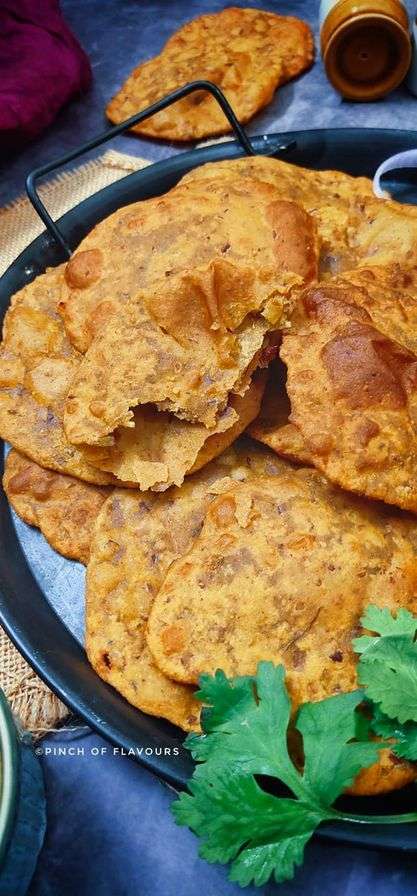
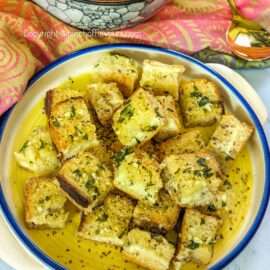
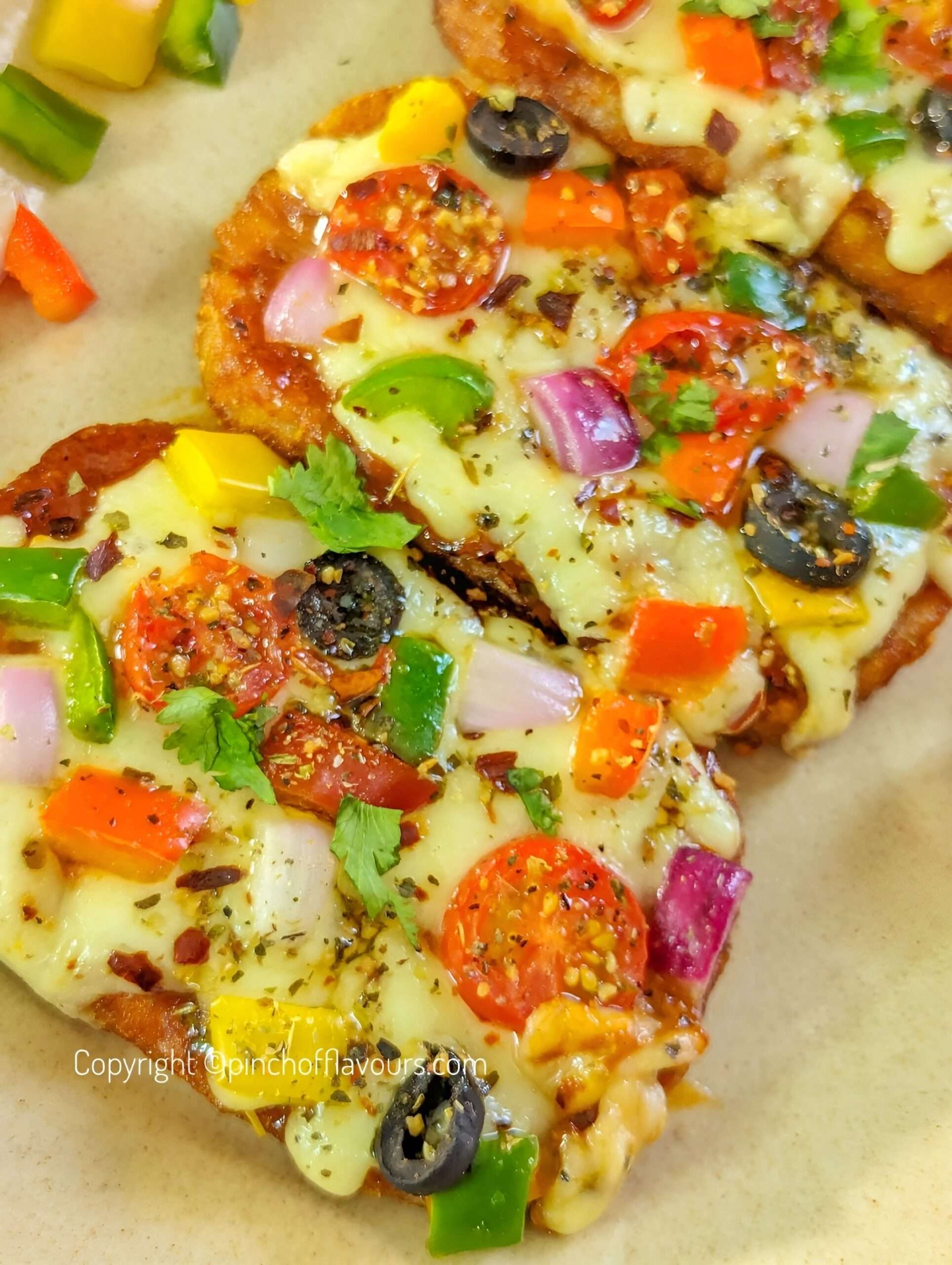

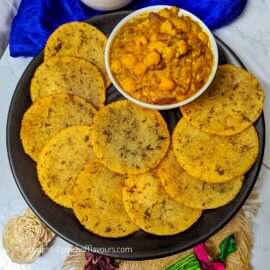

15 Comments
Swastika Das
February 2, 2021 10:13 amAwesome recipe.A must try.
Sanchita Dey
February 2, 2021 10:19 amThank you so much dear
Sanchita Dey
February 10, 2021 8:31 amThank you so much
Leia Watkins
February 2, 2021 10:15 amI love rajma and this recipe has got me drooling by just looking at the pics. Will definitely try it.
Sanchita Dey
February 2, 2021 10:19 amThank you so much 🙂
Sanchita Dey
February 10, 2021 8:31 amThank you so much
C. Raj
February 2, 2021 10:52 amExcellent recipe. Yummy. I wish I was a cook. Thank you so much for sharing. 😋😋
Sanchita Dey
February 2, 2021 12:01 pmThank you so much paa
Abhishek Dey
February 2, 2021 11:02 amLooks scrumptious !!!
Sanchita Dey
February 2, 2021 12:01 pmThank you so much
Navya Jain
February 2, 2021 11:14 amMouth watering recipe..loved it
Sanchita Dey
February 2, 2021 12:01 pmThank you so much
Sanjukta
February 2, 2021 11:15 amawesome recepie
Sanchita Dey
February 2, 2021 12:01 pmThank you so much
zortilonrel
April 8, 2021 12:32 pmI am impressed with this site, really I am a fan.
Leave a Reply